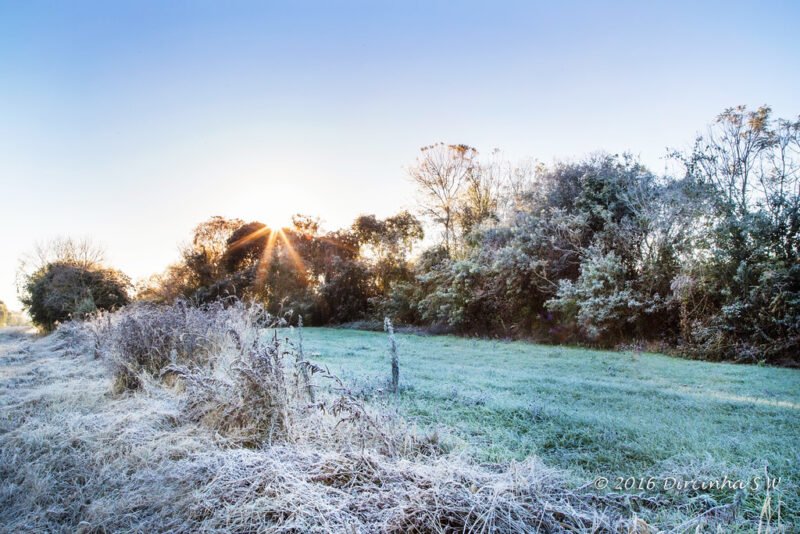Many people ask if it snows in Brazil, a country famed for its abundance of sunlight. Yes, it is correct! Even so, it is rather unusual for snow to fall in the south, where the temperatures are cooler, and the geography is hillier.

In truth, snowfall is a yearly occurrence in several places in Brazil. If you visit Brazil in the appropriate season, you can even see some snow in the high plains, far from the warm beaches in Nordeste and the humid expanses of the Amazon rainforest in the north.
In Brazil, where does it snow?
The high plains of Brazil’s southern area get the majority of the country’s snowfall. The Southern area of Brazil is made up of the states of Rio Grande do Sul, Paraná, and Santa Catarina. Keep in mind that Brazil is the size of a continent, extending 4,378 kilometers (2,720 miles) north to south.
Because of its vast area, it has a variety of climates, including equatorial (Amapá and Pará), semi-arid (Rio Grande do Norte, Paraba), and high-altitude tropical (Sa Paulo, Minas Gerais).
The sub-tropical zones in the south are barely outside the tropical climate zone, and this, along with the country’s high height, allows it to snow in Brazil. Head south of the Tropic of Capricorn and farther interior on a map of Brazil to identify the location where you are most likely to see snowfall in Brazil.
In Brazil, where does the most snowfall?
So Joaquim is not only the Brazilian city with the most snow days, but it is also a source of revenue for the region, with an average of 13, 000 people visiting each year to experience the cold! In Vacaria, Rio Grande do Sul, on August 7, 1879, the most snow ever recorded in Brazil fell.
More than 2 meters of snow was observed on this occasion. On June 15th, 1985, near Pico das Agulhas Negras, substantial snow fell for the second time in Brazil. This mountain, located in Brazil’s Itatiaia national park between the states of Rio de Janeiro and Minas Gerais, is the fifth tallest in the country.
How are the winters in Brazil?
Even in the winter, the climate in much of Brazil is mild, with temperatures averaging 13-18°C (55-65°F) in major cities like Rio de Janeiro, Curitiba, and Sao Paulo.
Does Brazil get cold in the winter?
Yes, it gets chilly in Brazil during the winter, but not in the same way in every place. While the south of Brazil is notorious for being chilly throughout the season (13oC – 55oF), the remainder of the country is mostly unaffected, with low temperatures ranging from 15 to 17oC.
Places To Visit In Brazil
Rio de Janeiro
Rio de Janeiro is the most energetic and thrilling city on the planet. Rio de Janeiro, in southern Brazil, is the most visited city in South America because of its well-known mountains, beaches, and Carnival celebration.
Rio de Janeiro is located in one of the world’s biggest ports, surrounded by natural wonders such as the Sugarloaf and Corcovado mountains, as well as well-known beaches such as Copacabana and Ipanema. Within this giant metropolis lies Tijuca National Park, a natural forest filled with animals and vegetation.
The massive Christ the Redeemer monument atop Corcovado mountain is the city’s most famous feature. Colonial strongholds, past presidential residences, and Maracan Stadium, one of the world’s largest football stadiums, are among the city’s other notable features.
Unfortunately, most people associate Rio with violence and favelas. Favelas are low-income housing districts, generally slums on the city’s various mountain slopes, that are contrasted with middle-class communities.
One of the world’s major Carnival festivities takes place in Rio de Janeiro, which is known for its colorful parades, costumes, dancing, music, fireworks, and street parties. Aside from the festival, the city comes alive at night with a plethora of taverns and dance clubs.
Foz do Iguacu
Iguazu Falls, one of the world’s most awe-inspiring natural marvels, crosses the Argentine-Brazilian border. Niagara Falls and Victoria Falls have been compared to it because of their enormous size and scope. Its unending succession of waterfalls, surrounded by lush jungle, run for about three kilometers, making it the world’s biggest waterfall system.
Countless gallons of water from the Iguazu River flows over the Parana Plateau every second, crashing into the rocks and ponds below. While Argentina accounts for 80 percent of the falls, the Brazilian side provides the most breathtaking vistas, with the Devil’s Throat canyon being the centerpiece.
Visitors may take a boat trip beneath the falls or go trekking in the humid jungle that surrounds them, in addition to staring in amazement at Iguazu Falls and soaking in the deafening roar. Foz do Iguaçu, a large and relatively secure city by Brazilian standards is the Brazilian side’s entry to the falls.
Salvador
Salvador is one of Brazil’s top tourist attractions, with a historic Old City, stunning beaches, vibrant culture, and one of the world’s largest Carnival festivities. Salvador is the third biggest city in Brazil and the capital of the state of Bahia. As the oldest city in the Americas, Salvador has been around for over 1,000 years.
Salvador’s Old City, which contains colonial architecture, gorgeous cathedrals, and plazas where important events previously happened, still maintains vestiges of its history. Many restaurants, pubs, art galleries, and handcraft shops may also be found in the old area.
In contrast, Salvador’s New City sector is home to all of the city’s new developments, including commercial malls, entertainment venues, golf courses, and residential subdivisions.
Salvador, located on the shore of the Bay of All Saints, has great beaches for sunbathing, swimming, and surfing. Porto de Barra, Flamengo, and Stella Maris are among the most popular.
Salvador’s yearly Carnival celebration is one of the city’s most popular attractions. This spectacular celebration dubbed one of the largest in the world, features music, dancing, parades, costumes, and street parties.